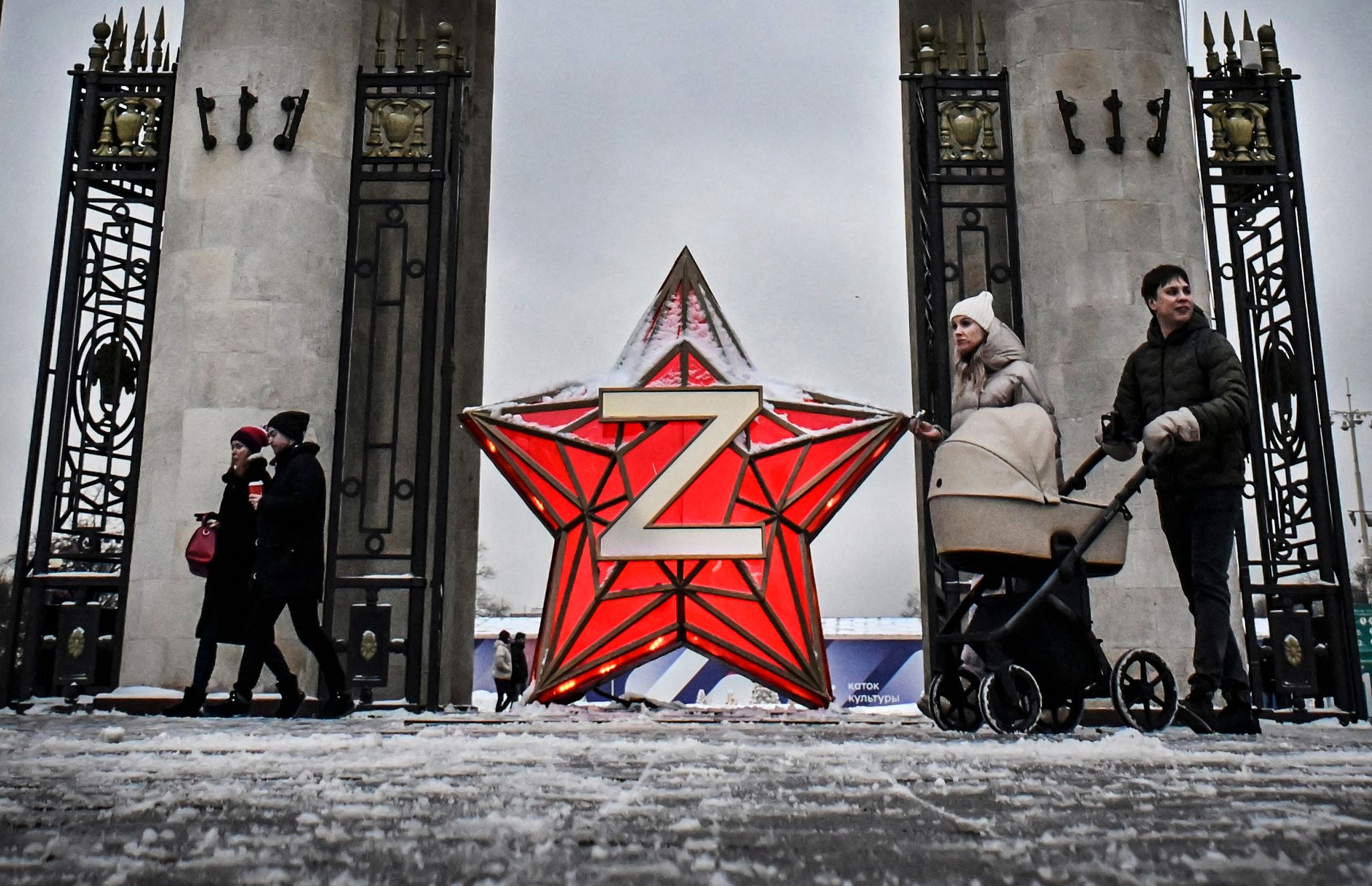Timelines have shifted in Russia’s war against Ukraine: It is going on far longer than anyone had planned. That means the Kremlin in 2023 will confront urgent infrastructure spending needs and will have to dig deep to save entire industrial sectors hit by war and sanctions. The problem is, government spending here will be severely restricted, as priority spending will be on the army and domestic security. Some impossible budgetary choices await.
A December analysis issued by Alfa Bank suggested the prospects for the real economy were much worse than official predictions. In particular, the report claims the government’s predictions overestimate consumption and investments while underestimating the challenges of reorienting export infrastructure to Asian markets. This would contract Russia’s GDP by 6.5 percent. (The report also anticipates ballooning deficits for federal and regional budgets.)
Granted, this Alfa Bank paper is an outlier. Even so, its predictions are perfectly plausible. The second half of the year has seen a major shift in timelines as regards the war in Ukraine, something that now even Vladimir Putin openly admits. Costs that seemed to be avoidable before the summer — such as losing European export markets for key industries — are now becoming realities, without any clear exit routes. This is not only true for oil and gas exports: coal, metallurgy and timber have been also challenging to reorient to Eastern markets due to the costs involved.
The possibility of winning the war or at least outlasting Ukraine and the West may still be the dominant narrative domestically, one that is difficult to challenge; but there is growing uncertainty about the costs and the aftermath. Mobilization has not officially ended and there is talk about a second round, with the authorities now more eager to prevent draft dodging. This raises the risk of labor disruptions, diminishing profit margins and the dampening of demand, creating negative feedback loops. Falling profits will affect the revenues of regional budgets, which are already losing corporate income tax receipts, even if, as it seems now, personal income tax receipts will fall slower and perhaps less consistently.
The number of bankruptcies is expected to rise, their number subject mostly to the amount and type of aid from the state. The federal budget may assume some of these tasks directly, but it seems regional governors will continue to be responsible for keeping industries running (which in practice will likely mean relying on federal transfers anyway).
Insufficient investment is not a novel issue. Russia’s investment-to-GDP ratio, compared to other emerging markets, has been low and stagnating for years, with investments concentrated in a couple of key industries. However, with the onset of the economic and fiscal crisis triggered by the war, the situation got simultaneously worse and investment needs more pressing. In 2022, investments have been driven by the state, otherwise their volume has been flagging after an initial boost at the beginning of 2022. This again is likely due to the uncertainties associated with the war, domestic politics and mobilization. The necessity to keep industries running requires heavy investments in the near future, thus projects financed by the state or state-owned companies will likely continue to play a major role.
Rails and fish
Commodities such as coal and timber as well as metallurgical companies have suffered a loss of export markets; the reorientation of exports has not been easy. Steelmakers were forced to reduce exports to Asia due to falling profit margins. Russian coking coal was reportedly selling in India with discounts over 60 percent this fall; Russia’s coal producing regions are losing revenue and production. The European Union’s recent loosening of sanctions on maritime trade of coal could give some relief to the sector, but railway lines, a crucial transit artery, remain clogged (all while Far Eastern ports are also facing higher volumes of cargo and, partly due to mobilization, a lack of manpower). This is not an entirely new problem, but sanctions on technology transfer have made it worse by slowing down railway development, jeopardizing the existing stock of modern railway wagons, and forcing Russia to import crucially important components for its industries from Asia instead of Europe.
Exporters are thus requesting discounts from Russian Railways (RZhD). Yet Russian Raiñways is already struggling financially and relying on federal transfers to carry out its ambitious one-trillion-ruble investment program. The government, meanwhile, is trying to spread the burden to regions, businesses and citizens: it recommended a hike in electricity tariffs for industrial users in the Kemerovo and Irkutsk regions (a step that Kemerovo has already taken), a sizable burden on power intensive industries, and prompted RZhD to raise its ticket prices.
The price and tariff hikes create visible frictions, but will not be a long term fix. In the foreseeable future the question of which type of cargo to prioritize will remain open. A recent analysis by the Center for Strategic Development (CSR) found that as long as capacities are low, prioritizing coal is the least effective choice: container transfers generate eight times as much income as coal, and metallurgical goods are also more profitable. At the same time, due to the coal industry’s concentration and its lobbying power changes the calculus. The coal industry includes heavyweights with alleged ties to organized crime, such as Kuzbassrazrezugol owners Iskander Makhmudov and Andrey Bokarev, while Sergey Tsivilev, the governor of Kuzbass, Russia’s main coal producing region, is related to Putin’s cousin by marriage. Prioritizing coal, while economically senseless, may seem like a good choice politically.
Another similar story is panning out in Russia’s coastal regions, where companies are facing a redistribution of fishing quotas under a government-sponsored bill recently adopted by the Duma. The sector does not lack political heavyweights: people connected to some of Russia’s most influential oligarchs, Arkady Rotenberg and Gennady Timchenko have accumulated interests in it since the start of the industry’s reform in 2016. The bill, which passed its first reading in October, will withdraw and redistribute a significant chunk of quotas in auctions and overhaul investment obligations to support struggling domestic shipyards. These changes are necessary, according to the bill’s supporters, to increase the efficiency of a strategically important sector and help support an industry that has been struggling due to international sanctions. The government also expects to raise a combined 500 billion rubles in income and additional investment — an important sum at a time when development funds in the federal budget are cut.
But Far Eastern governors and fishermen’s organizations strongly criticized the bill after its first reading. They pointed out it would likely eviscerate small and medium-sized companies that would not be able to obtain the necessary amount of loans to bid for quotas and buy vessels, essentially allowing bigger enterprises to gobble up further assets in the regions. Companies paying taxes locally would close; fishing settlements would depopulate. Duma deputies have tabled amendments to the bill, proposing to scrap or postpone its most controversial parts. Some of these were adopted in the final reading, mostly, it seems, to reassure regions concerned about their fiscal receipts. But crucially, a request to postpone the bill’s entering into force was turned down.
The struggle over the fishing sector is not only another example of a conflict between the regions and central govenrment; it also shows how the problems and necessities prompted by sanctions and the government’s focus on the military can create avenues for dominant business players to further their interests.
Overstretched
One common point in these conflicts is that they are stemming from the federal government’s priorities. Right now these seem to be immutable. Betting on continuous warfare to wear down Ukraine and its Western supporters, the government has both chosen to prioritize military and security expenses in the federal budget and accepted the long-term costs this will inflict on the economy. It forces regions and business elites to share the burden.
These conflicts, as they proliferate, will add to the many pre-existing troubles of regional governments. Their burden is already enormous. In just a year they have had to conduct (and partially finance) military mobilization, keep factories running and ensure that their regions do not face critical shortages of products. All after years of struggling with a pandemic.
It is unclear whether Russia’s governors, most of whom are federal officials appointed to the role, have the means to navigate these conflicts. Russia’s system of governance, with its fiscal and political centralization steadily growing over the past two decades, is built around the principle of accountability towards superiors rather than voters. It may have been made more efficient by reforms pushed by Prime Minister Mishustin over the past two years, but it has not evolved to manage crises of such caliber. Money is getting tighter. Several regions have faced a noticeable drop in tax receipts — which will likely continue in 2023 — and many have adopted budgets with deficits.
Several regional governments now seek powers to fine citizens and businesses for not implementing the decisions of the so-called «operative headquarters». These bodies, where regional public and security officials sit, were set up to carry out Putin’s September decrees on introducing elements of martial law in most Russian regions, and ensure «economic stability» and the «needs of the military». While the main justification of these may be for extra powers to repress popular protests, it is still unclear how these powers will be used. It remains to be seen whether public officials or security personnel have the upper hand; in any case, these laws may create new uncertainties — rather than resolve them — at a time when expropriation aided by the security services remains a growing concern.
The Russian government is approaching the problems created by the war in a way similar to how it approached the COVID-19 crisis. Then, like now, governors were nominally empowered to handle the crisis, keeping in mind the specific risk profile of their regions, but they had to look for cues — and money — from the federal government. As before, this will likely happen through Prime Minister Mikhail Mishustin, or Moscow Mayor Sergey Sobyanin, both heading two separate coordinating bodies with overlapping responsibilities. Then, like now, the short-term political interests of the federal government trumped public policy considerations.
Then, while policy outcomes ranged from bad to disastrous, the Kremlin appeared to be satisfied with how the system largely preserved political stability. But that was mostly due to a lucky constellation of plentiful federal money, indifference towards the pandemic’s death toll and a general sense that after the panic of the first couple of months, the authorities got a firmer grip on the situation. Now, however, there are more friction points, less money to spread, and a crisis with increasingly unpredictable outcomes and ballooning costs. This does not mean that a revolution or a coup is in the making — but if the system proves incapable of handling these conflicts, it will be tougher for officials to fulfill both of their principal roles: to observe and implement the priorities set by the federal government; and keep internal conflicts under the lid.










